The nose is arguably the most prominent feature of someone’s face. Through the ages, it’s been the subject of fixation, adulation, contemplation and even the focus of science. Our sense of smell functions directly through it. Whether we’re conscious of it or not, we depend on it every day.
As kids we abuse it, as teenagers we obsess over it and as adults we ignore it. Despite thinking about it so much, we never actually take the time to find out how it works. Below we’re going to cover some of the most common terms used in regards to our nose and sinuses.
Hopefully, you’ll have more insight into what they do for you and what you can do to keep them in good working order.
Common Nasal & Sinus Condition & Treatment Terms
Acute sinusitis: A short-term infection, which typically responds well to decongestants and antibiotics. This infection causes the cavities around your sinuses to become swollen and inflamed and causes mucus to build up.
Adenoid: Adenoids are lymphatic tissues that rest behind the nasal cavity, above the soft palate.
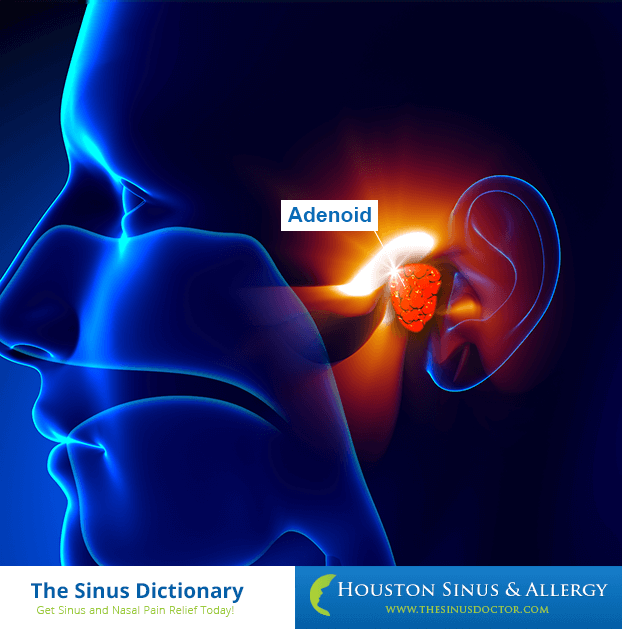
Ageusia: This is the loss of your sense of taste, which occurs when you have blocked sinuses and have lost your sense of smell.
Allergic Rhinitis (Allergies): The same things that cause allergies can aggravate our mucous membranes. This is called allergic rhinitis. Instead of reactions on our skin we feel this in our sinuses. This could be one of the reasons you’re nose feels itchy, you’ve got the sniffles, congestion or feel abnormally tired.
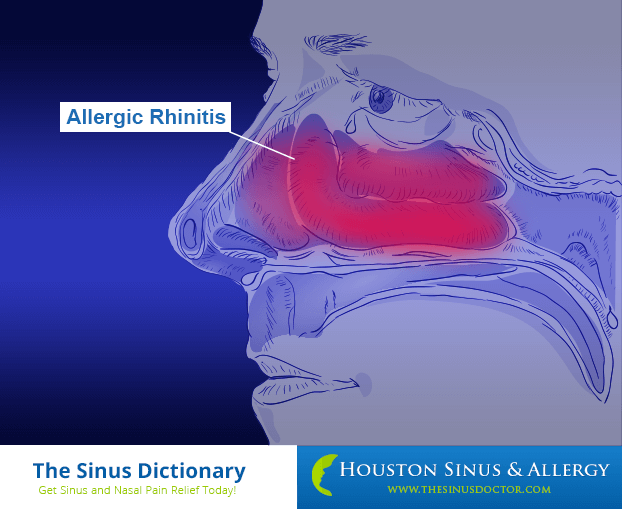
Allergy: Our body’s way of reacting to things that irritate it. This can be anything including foods, bacteria, contaminations or even types of dust. We know we’re having an allergic reaction when we sneeze, itch, swell or have skin become aggravated.
Anosmia (loss of smell): This is a side effect of that occurs when you are experiencing a blockage of the anterior ethmoid sinuses. There are plenty of reasons why you could suddenly lose your smell. It can happen temporarily when we’ve got allergies, obstructions in our airways from:
• A nasal infection
• Nasal polyps
• Smoking
Permanent loss of smell usually involves some type of damage to either your nose or brain.
Antigen: Antigens are substances that induce the production of antibodies that are abnormal in sensitive individuals.
Antioxidant: Molecules that inhibit the oxidation of other molecules are called antioxidants.
Balloon Sinuplasty: A technique used to widen your sinus passages. This is less invasive than other options, which actually cut pieces from your sinuses. In Sinuplasty a thin balloon is inserted into the passage, inflated, deflated and then pulled out. The tissues inside are unharmed and the widening is usually permanent. This procedure makes a huge difference to people who suffer from chronic sinus infections.
Barosinusitis: When the sinuses swell and close, you may experience sudden pain in one sinus area. This pain is barosinusitis.
Caldwell Luc: This is an operation that involves the invention of a passageway for drainage between the maxillary sinus and nose. Performed by surgeons, this surgery is typically performed as a last resort.
Chronic Sinusitis: When sinusitis symptoms last longer than 8 to 12 weeks or occur repeatedly, it is known as chronic sinusitis.
Chronic Sinusitis Treatment: The goal of this treatment is to relieve the symptoms of sinusitis that last for 12 weeks or longer. In most cases, the physician will begin with antibiotic treatment and if that does not work other options may include Balloon Sinuplasty.
Cilia: These are tiny hair-like structures that reside on the sinus membrane surface. The cilia work to help keep mucus out of the sinus cavity.
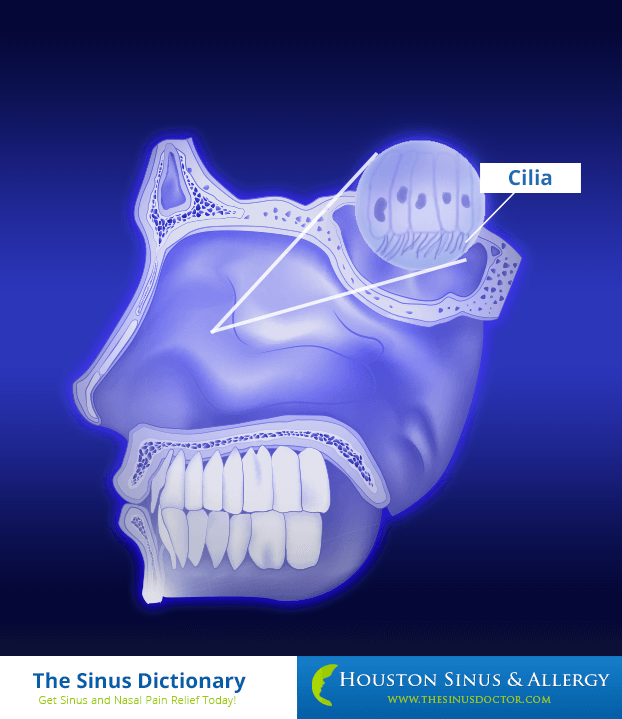
Collagen: Naturally occurring proteins that are found in animals are called collagen. Collagen is found in the skin, teeth, tendons, cartilage and bones.
Congenital Disorder: Any one of several different conditions that develop during the first month of life, before birth or that exists at birth is called a congenital disorder.
Decongestants: Drugs that reduce nasal congestion are called decongestants. They work by constricting the blood vessels and reducing blow flow to the nasal passages.
Deviated Septum: Caused by either an impact to the face or from birth as a congenital defect. Your septum is essentially the cartilage dividing your left and right nostril.
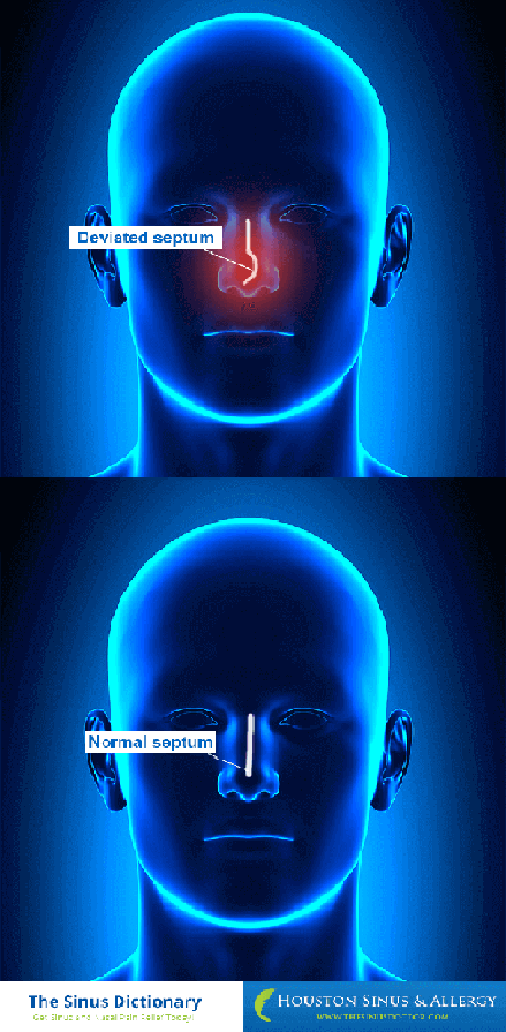
ENT doctor: Ear Nose and Throat doctor is by definition an otolaryngologist. This type of doctor diagnoses, treats and manages disorders of the ears, nose and throat.
Endoscopic Sinus Surgery: Surgery performed with a tool called an endoscope. The endoscope is used to view the inside of the nose. Examples of this type of surgery include FESS and Balloon Sinuplasty.
Ethmoid Sinus: This is a spongy bone that makes up the front of the skull and the roof of the mouth. The ethmoid bone is a collection of air cells.
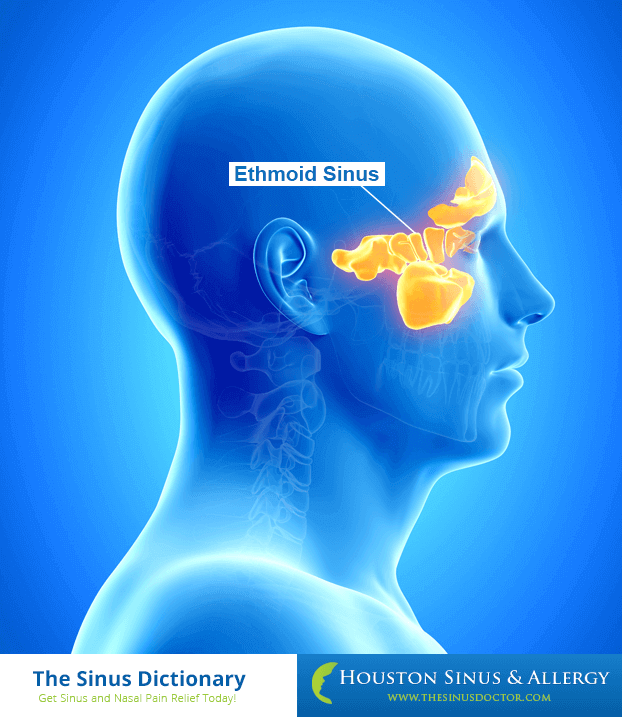
Fluoroscopy: The process of using an x-ray to obtain real-time images through a fluoroscope.
Frontal sinus: The pocket of air cells in the forehead is called the frontal sinus.
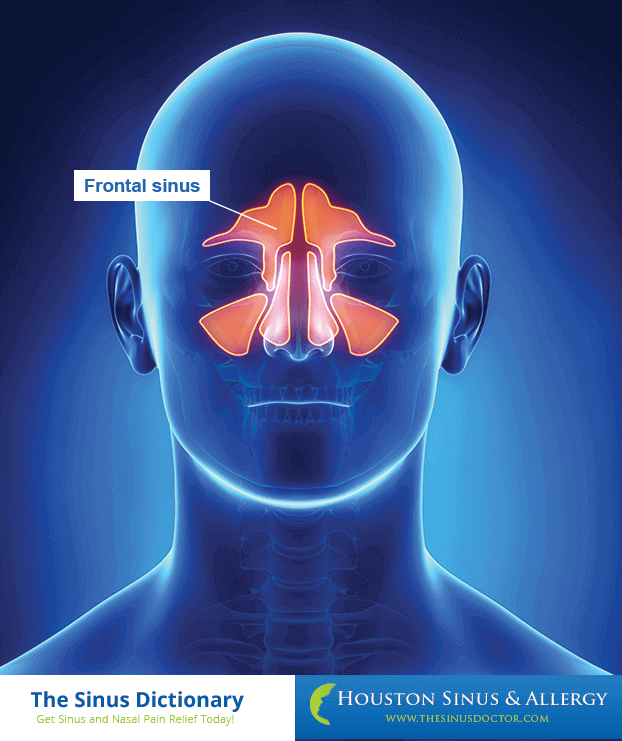
Functional Endoscopic Sinus Surgery: FESS is a surgery of the sinus in which the surgeon uses an endoscope to look into the nose. The surgeon uses this procedure to remove any blockages that prevent proper drainage of the sinuses.
Hypertrophy: An increase in an organ or tissue volume caused by the enlargement of the cells
Image-Guided Sinus Surgery (computer navigation): Used in certain circumstances only. This is much like Endoscopic Sinus Surgery. But it uses a computer “map” that links to the instruments performing the surgery. Because it’s so accurate, it means there will be less scars inside the nose.
Immunotherapy: Suppressing, enhancing or inducing the immune response in an effort to treat a disease.
Inferior Turbinate Reduction (for nasal obstruction): Your turbinates are three kinds of projection made of boney or soft tissue. When enlarged (because of say, allergies), they stick out inside your nose. They can block your nasal passages or increase the chances of nasal congestion. Usually done with endoscopy, the surgery can improve your breathing.
Laryngopharyngeal Reflux: When gastric contents flow to the upper aero-digestive tract and cause a variety of symptoms including asthma, hoarseness and cough.
Malaise: A general feeling of uneasiness or discomfort. It is often one of the first indications of a disease or infection.
Maxillary Sinus: Of all of the sinuses, this is the largest one and it is found in the cheekbones.
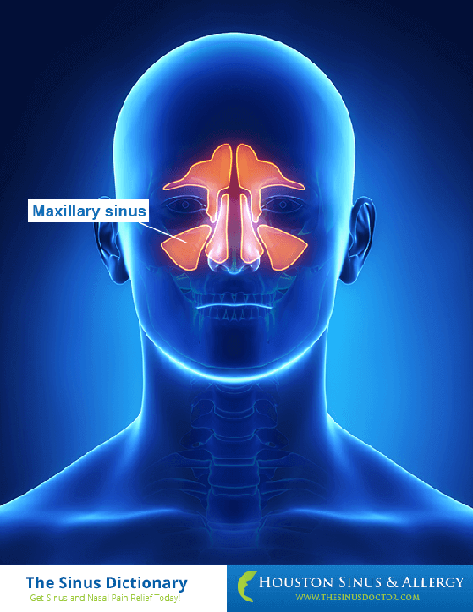
Mucus: During normal circumstances, sinuses can produce up to 1.5 liters of mucus in a day. Allergies and other environmental factors can trigger increased mucus production and change its characteristics.
Mucous Membrane: The lining found inside the throat, nose and mouth produces a slippery fluid that is called mucus. The sinuses are normally empty. However, environmental triggers, infections, and allergies can increase the production of mucus.
Nasal Cautery (for nosebleeds): If you’re very prone to nosebleeds, this process can solve the problem. A laser, silver nitrate or electricity cauterize (burn) the troublesome blood vessel. This procedure is quick and painless but should not be overdone.
Nasal Endoscopy: Also known as sinus endoscopy or rhinoscopy, a nasal endoscopy is an examination of the nose and sinuses with a device called an endoscope.
Nasal Polyps: These are inflammations that have grown on the inside of your nose. The number of them can be anywhere from a small, singular one to a large cluster of them. Nasal polyps can suddenly appear because of sinus infections, allergies, or even damage to the nose.
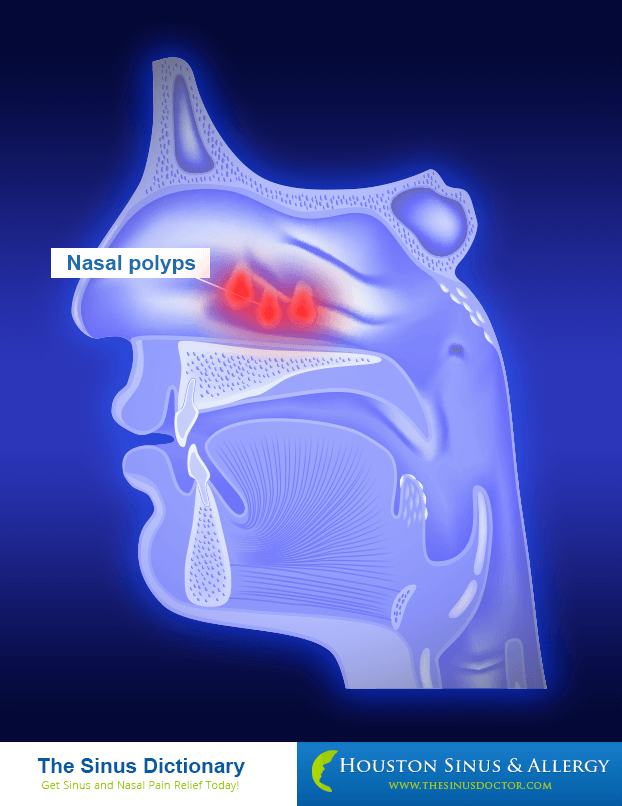
It’s important to take care of them. They can make it harder to breathe or even change the look of your nose by pushing the small bones out of their place with their sheer size!
Nasal Reconstruction (functional nasal airway surgery): Sometimes the way your nose is built can affect airways. This can be either because it was like that since birth or because some sort of damage was taken to affect it. This kind of surgery is mainly to make it perform better but it also makes it look more natural. This affects self-esteem if the person is self-conscious of the nose’s appearance.
Nasal Septal Perforation Repair: The septum of the nose as mentioned above is the cartilage that divides the nostrils. For reasons including damage, disease, infection, or even drug use a hole can form. This can cause nosebleeds, affect your smell or increase your chance of getting infections. These perforations can be repaired using surgery or even plates which dissolve slowly over a few months. Generally, the closer the hole to the front of the nostril, the easier to repair.
Nasal Septum: The bony partition in between the nostrils.
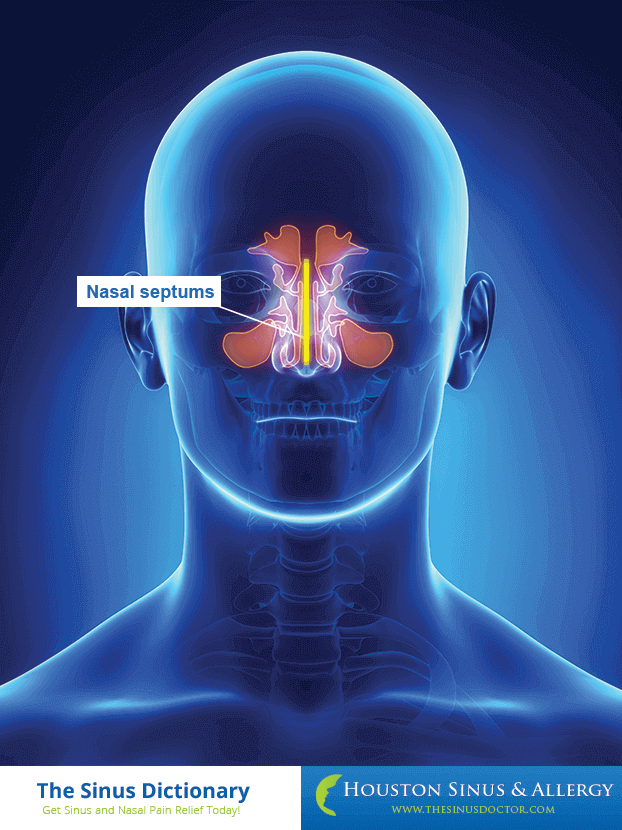
Nasal Steroid Spray or Drops: These drops are used to treat and reduce swelling of the nasal passages.
Nasal Wash: This treatment involves using a homemade or over-the-counter saline solution to rinse the sinus passages.
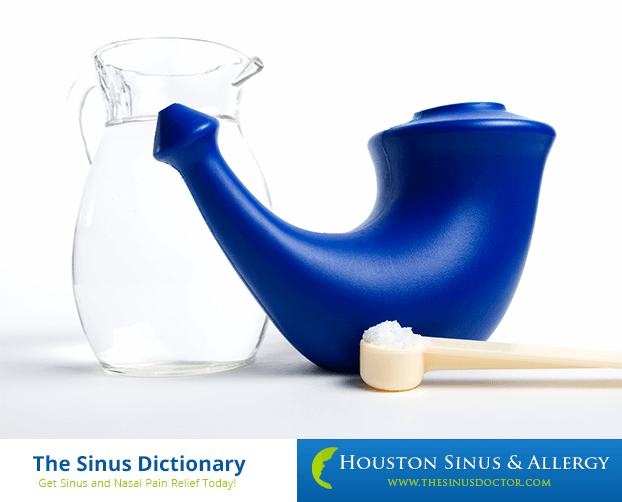
Otolaryngologist (ENT Doctor): A doctor who specializes in diagnosing ear, nose, and throat infections.
Otolaryngology: Area of medicine and surgery that specializes in the treatment and diagnosis of ear, nose and throat disorders. This includes the reconstructive or plastic surgery of the head and neck.
Over-the-counter (OTC) Sinusitis Medication: OTC medications include saline rinses and decongestants which decrease nasal congestion by constricting the blood vessels in the nasal passages. This also includes neti pots, which use a saline solution to rinse out the nasal passages.
Pediatric Sinusitis: This is the name of sinusitis in children. It can be difficult to diagnose since respiratory infections are more common in children.
Polyps: A polyp is an abnormal growth of tissue that projects from the mucus membrane.
Post-Nasal Drip: When mucus drains from the sinuses and collects in the back of the throat.
Quinolone: This is a class of antibiotics used in the treatment of respiratory infections that are resistant to traditional antibiotics. They include ciprofloxacin, levofloxacin and moxifloxicin.
Restylane: This is the brand name of injectable filler which contains hyaluronic acid. This injection lasts between 6 and 12 months.
Revision Sinus Surgery: Follow-ups to previous surgeries of the sinuses. These are usually a little more advanced. They either continue to focus on the issue or fix complications from another surgery.
Rhinitis: A scary way of saying “stuffy nose”. Usually can be divided into allergic and non-allergic. A runny nose, sneezing and difficulty breathing are symptoms. This can sometimes be linked to sinusitis or breathing issues.
Rhinoplasty: A cosmetic or plastic surgery performed on the nose to change or improve its appearance.
Rhinoscopy: In a rhinoscopy procedure, a thin, tube-like tool called a rhinoscope is used to examine your nose. It has a light and lens so the doctor can view inside of the sinuses and may also have a tool that is used to remove tissue.
Rhinosinusitis: Another word for a sinus infection.
Saline Rinse: A mixture of salt and water that is bought either over-the-counter or homemade and is used to rinse the sinus passages.
Septoplasty: A corrective surgical procedure that performed to straighten the nasal septum, the vertical bone that separates the right and left nostrils.
Sinus: These are the areas behind your forehead, cheeks, nose and eyes. These cavities are filled with air and lined in membranes. They all open up into your nose. They produce mucous, affect your voice and, based on how they’re structured, actually affect the way your face looks. They’re critically important to your breathing and regulate the air you take in.
Sinus Surgery: Procedure carried out to treat sinus infections.
Sinus Headache: A headache caused by changes in sinus pressures. Symptoms can include pain, pressure in the face over the cheeks, the eyebrows and the forehead.
Sinus Infection: Inflammation of the nasal passages and sinuses.
Sinus Lining: This lining is covered by cilia, which work to help move the mucus out of the sinuses. When the sinus lining becomes inflamed, it may inhibit the movement and cause mucus build up in the sinuses.
Sinus Ostium/ Sinus Ostia: Small openings in the bones where air is able to enter the sinuses.
Sinus Pressure: Facial pain caused by the inflammation of the lining of the sinuses and/or the buildup of mucus and pus in the sinus cavity.
Sinus Surgery: Procedure carried out to treat sinus infections.
Sinuses: Sinuses are hollow spaces between the eyes and in the forehead. They produce mucus that normally drains into the nose.
Sinusitis Antibiotics: These are antibiotics used specifically to treat sinus infections caused by microorganisms and bacteria.
Sinusitis: An inflammation of the membrane lining of the sinus cavity.
Sinusitis Symptoms: Symptoms include the following:
- Facial pain and tenderness
- Difficulty breathing through the nose
- Sore throat from nasal discharge
- Swelling around the eyes, cheeks, nose and forehead
- Tooth pain
- Sinus pressure or congestion
- Loss of the sense of smell or taste
- Sinus headache
- Yellow or green mucus from the nose
- Fatigue
- Bad breath
Sinusitis Treatment: Treatment can include inhalation of steam, OTC medications, antibiotics and, in extreme cases, surgery.
Sleep apnea: Abnormal breathing pauses while sleeping. This chronic condition disrupts your sleep and can be potentially dangerous.
Sphenoid Sinus: The air cells behind the nasal cavity.
Stapedectomy: A surgery used to treat otosclerosis. In this surgery, the stapes is replaced with an artificial piston to improve hearing.
Tinnitus: Commonly known as ringing in the ears, this is when there is the absence of any external sound but the patient perceives sound in his or her ears. This is not a condition in itself but is a symptom of an underlying condition such as ear injury or hearing loss.
Turbinate: Three kinds of boney or soft tissue projections inside the nose. These filter the air coming into your lungs and can help fight off germs and infection. When the turbinates enlarge (hypertrophy) or swell, they block airflow and cause sinus headaches. They can be altered or removed with surgery.
Contact Houston Sinus & Allergy With Your Sinus Questions
Navigating the best diagnosis for ailments you’re having is best done by a professional. If you’re experiencing any of the above symptoms or are interested in looking into one of the procedures mentioned above, book an assessment with Dr. Nguyen today and get on your way to breathing and feeling better soon.
Book An Appointment
